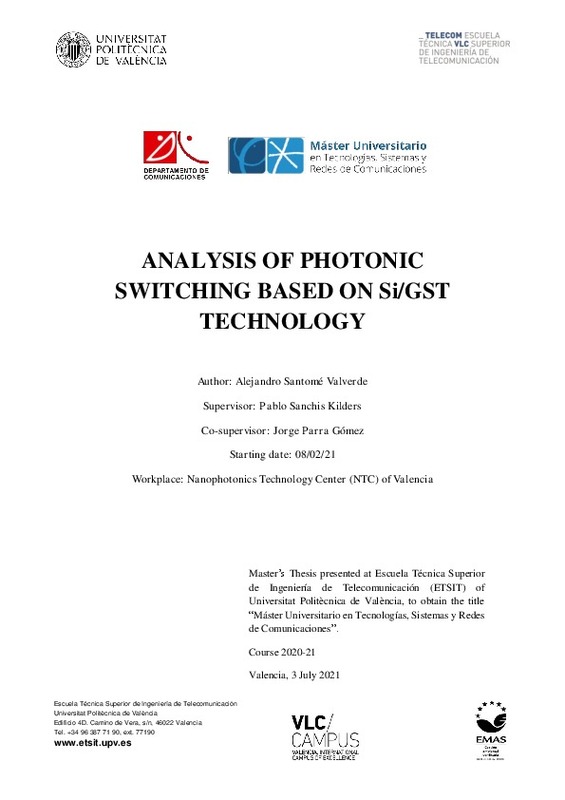JavaScript is disabled for your browser. Some features of this site may not work without it.
Buscar en RiuNet
Listar
Mi cuenta
Estadísticas
Ayuda RiuNet
Admin. UPV
Análisis de conmutación fotónica mediante tecnología de Si/GST
Mostrar el registro completo del ítem
Santomé Valverde, A. (2021). Análisis de conmutación fotónica mediante tecnología de Si/GST. Universitat Politècnica de València. http://hdl.handle.net/10251/174426
Por favor, use este identificador para citar o enlazar este ítem: http://hdl.handle.net/10251/174426
Ficheros en el ítem
Metadatos del ítem
| Título: | Análisis de conmutación fotónica mediante tecnología de Si/GST | |||
| Autor: | Santomé Valverde, Alejandro | |||
| Director(es): | ||||
| Entidad UPV: |
|
|||
| Fecha acto/lectura: |
|
|||
| Resumen: |
[ES] El objetivo del trabajo fin de máster es caracterizar experimentalmente y analizar las prestaciones de conmutación fotónica que es posible alcanzar mediante estructuras guiadas basadas en la combinación de silicio y ...[+]
[EN] The integration of the GST (germanium-antimony-tellurium or GeSbTe) material into silicon structures enables non-volatile switching between two states upon application of an optical excitation. This switching originates ...[+]
|
|||
| Palabras clave: |
|
|||
| Derechos de uso: | Reserva de todos los derechos | |||
| Editorial: |
|
|||
| Titulación: |
|
|||
| Tipo: |
|
recommendations
Este ítem aparece en la(s) siguiente(s) colección(ones)
-
ETSIT - Trabajos académicos [2408]
Escuela Técnica Superior de Ingenieros de Telecomunicación







